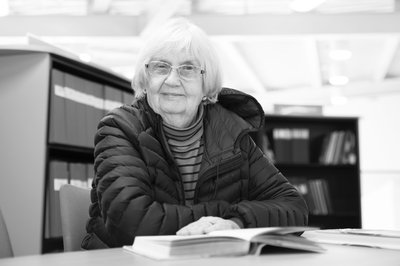Reading & Libraries
Summer Reading Challenge 2025: Story Garden
Summer Reading Challenge 2025: Story Garden at Inspire Libraries. For children aged 4 - 11. Starti…
Our new library catalogue is live!
Log in now
to browse, reserve and renew, or
visit our library service updates
for the latest news and tips.
Published 10th February 2022

We’ve all heard people say this kind of thing. Some of us have said it ourselves. When it comes to considering creativity, we tend to think first of painting or sculpting or other visual arts; writing poetry, drama or fiction; playing or composing music; interpretive arts like singing, acting, directing, dancing. Perhaps we’d include knitting, needlework, metalwork, woodwork and other crafts. But very rarely do we talk about reading as something more than a passive act.
The writer of the novel has created it and we, the readers… what do we do? Simply consume it? As though the author has made a cake and we taste it, digest it and give it marks out of 10? True, we sometimes talk about ‘devouring’ books, but is that a realistic description of the relationship between book and reader?
Celebrated American author Ursula K Le Guin didn’t think so. In a 1989 essay she wrote,
“The unread story is not a story; it is little black marks on wood pulp. The reader, reading it, makes it live: a live thing, a story.”

And Britain’s own Angela Carter seems to agree:
“Reading a book is like re-writing it for yourself. You bring to a novel, anything you read, all your experience of the world. You bring your history and you read it in your own terms.”
Both writers frame the reader as a participant in the story’s existence, and the act of reading as a re-making, a re-imagining, by a reader who has a genuine effect on the words. Everyone’s experience of it will be different, so a million readers of the same book create a million versions of it.
This is a refreshing and exhilarating idea. Just as the writer sits at her laptop, or picks up his pen, and begins to create something unique, a story nobody else could write as they write it, so the reader opens a book and conjures the story afresh.
To get very slightly scientific about it, think of the variables. Each reader has their own origins, family background, education and upbringing, personal geography and social circles. Add in personality, hobbies and interests, tastes, convictions, insecurities, beliefs, fears, desires and state of mind, and you have an infinite number of individuals who bring all of the above and more to the act of reading a book.
And even then, the same reader can recreate a book over and over again: Think of a novel you’ve read more than once. Was it an identical experience? Did it give you exactly the same amount of pleasure and surprise at the second or third visit? If the answer to this is yes, another question springs to mind: why are you reading it again? I suspect that even our ‘comfort reads’ – the books we return to every few years for a slice of familiar, reliable, enjoyment – change, however subtly, at each re-reading. They always give us something new because we have brought something new to them – our latest version of ourselves. Maybe, to torture a metaphor, that’s the icing on the cake…
Here at Inspire, the creativity of reading fascinates us and we want to find out more about it. I Am A Reader is an Arts Council England funded project which is helping us do just that. To find out more, visit the microsite at www.iamareader.org.uk, and find out how you can share your experiences with us and with other readers, and help shape a new way of talking about what it means to be a reader.